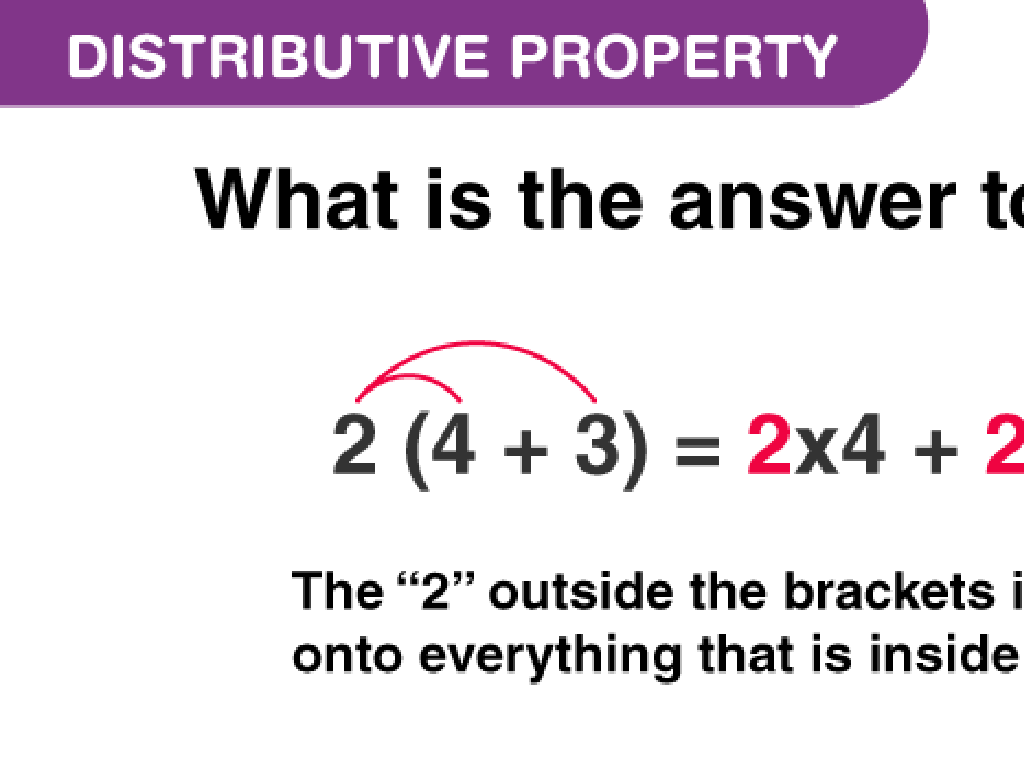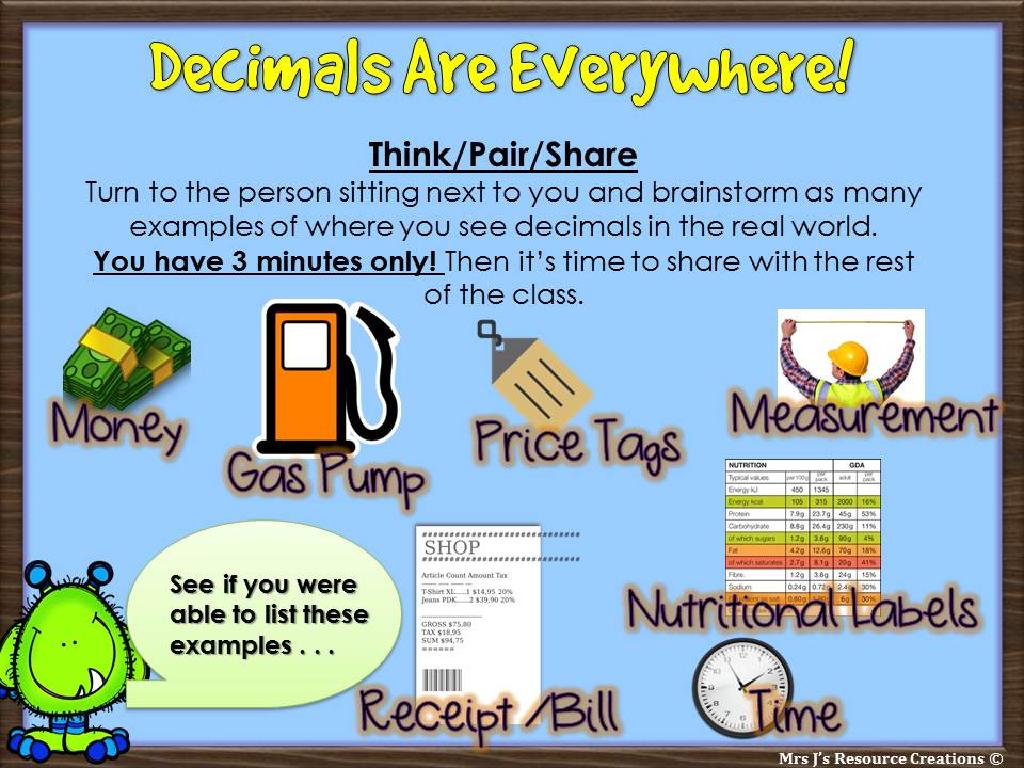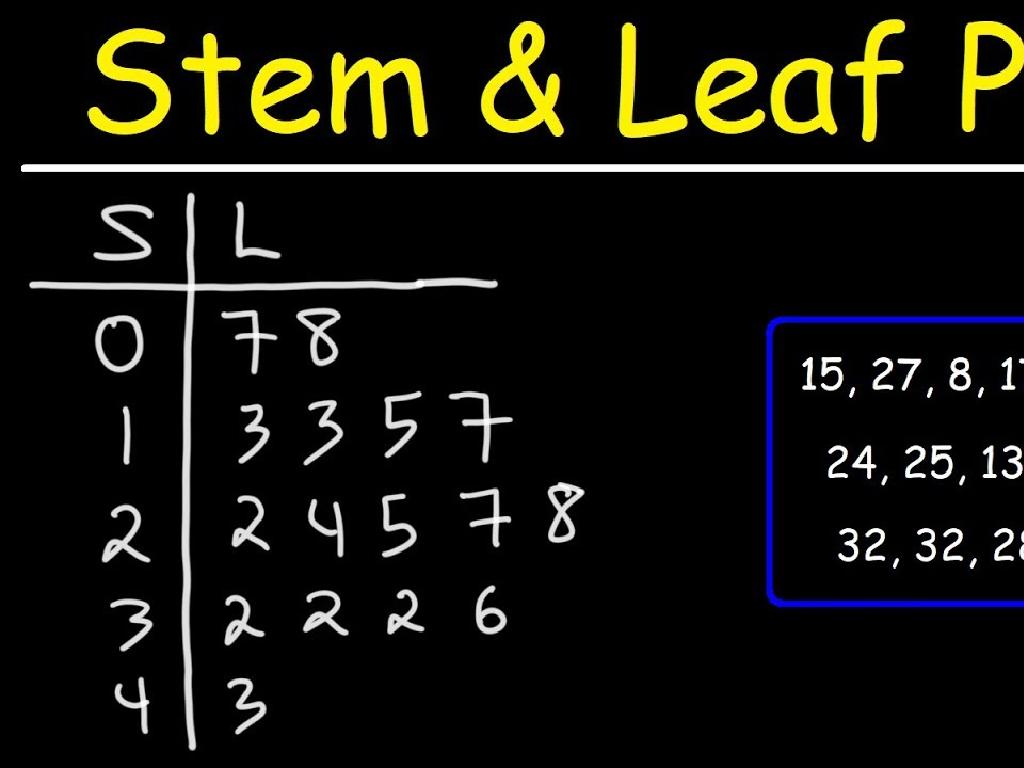Estimate Differences Using Compatible Numbers
Subject: Math
Grade: Third grade
Topic: Estimate Differences
Please LOG IN to download the presentation. Access is available to registered users only.
View More Content
Estimating Differences with Compatible Numbers
– What is estimation?
– Estimation is finding a number close to the exact answer.
– Compatible numbers make it easy
– Numbers that are easy to add, subtract, multiply, or divide together.
– Estimation helps in daily life
– Useful for quick calculations like shopping or cooking.
– Practice estimation with examples
|
Begin the lesson by explaining the concept of estimation as a way to find a number that is close enough to the right answer, which makes calculating easier and faster. Introduce compatible numbers as friendly numbers that are easy to work with, such as rounding to the nearest ten. Emphasize the importance of estimation in everyday situations, such as figuring out if you have enough money to buy something or how much paint you need for a room. Provide examples for the students to practice, like estimating the difference between 253 and 47 by rounding to 250 and 50, and then subtracting to get 200. Encourage students to share their own examples and explain their thought process.
Understanding Estimation
– Estimation is a ‘math guess’
– Think of estimation like guessing the number of candies in a jar!
– It finds a close enough answer
– Instead of counting exactly, we make a smart guess.
– Estimation is quick and useful
– It saves time when exact numbers aren’t needed.
– We use it in daily life
– Like guessing how many apples we can buy with $5.
|
This slide introduces the concept of estimation, which is a fundamental skill in mathematics and daily decision-making. Estimation allows students to make an educated guess about a number without needing an exact count or calculation. It’s important to convey that estimation is not about being perfect but about being close enough to make a decision quickly. Use relatable examples such as guessing the number of candies in a jar or estimating the amount of money needed for a purchase to illustrate the concept. Encourage students to think of times they have used estimation outside of school and discuss the benefits of this skill in everyday life.
Estimating Differences with Compatible Numbers
– What are compatible numbers?
– Numbers that are easy to work with in our heads
– Making mental math easier
– Examples of compatible numbers
– 300 and 298, or 50 and 48, are close and easy to calculate
– Practice estimating differences
– Use compatible numbers to estimate 452 – 297
|
This slide introduces the concept of compatible numbers, which are numbers that are easy to compute with mentally. They are particularly useful for estimating differences because they are close to the actual numbers involved in the calculation. For example, instead of subtracting 297 from 452, which can be complex for third graders, we can round 297 to 300, a compatible number, and then subtract it from 452 to get an estimated difference. This method simplifies the process and helps students develop mental math skills. Encourage students to find pairs of numbers that are close to each other and practice estimating differences using these pairs. Provide several examples and guide them through the process of choosing compatible numbers and performing the estimation.
Why Use Compatible Numbers?
– Speed up mental math
– Compatible numbers are close to the actual numbers and make adding or subtracting easier in your head.
– Check answer reasonableness
– After solving, compare your answer with an estimate to see if it makes sense.
– Solve with approximate numbers
– Sometimes, a close enough answer is all you need to make decisions.
– Ease of calculation
|
This slide aims to explain the importance of using compatible numbers in estimation. Compatible numbers are rounded figures that are close to the actual numbers but easier to work with mentally. They are particularly useful for speeding up calculations, checking the plausibility of answers, and solving problems where precision is not crucial. For example, if students are asked to estimate the difference between 452 and 296, they might round to 450 and 300, making it easier to see that the answer is close to 150. Encourage students to practice using compatible numbers in different scenarios to become comfortable with estimation.
Estimating Differences with Compatible Numbers
– Estimation simplifies subtraction
– Use compatible numbers for ease
– Numbers that are easy to subtract, like rounded numbers
– Example: 452 becomes 450
– Round 452 down to 450 to make it simpler
– Subtract 450 – 170 instead
– 450 is close to 452, and 170 is close to 174, making subtraction easier
|
This slide introduces the concept of estimating differences by using compatible numbers, which are numbers that are close to the actual numbers and easier to subtract. The goal is to find an approximate answer that is simpler to calculate than the exact answer. For example, instead of subtracting 452 and 174, which may be challenging for third graders, we round the numbers to the nearest ten to get 450 and 170, which are more ‘compatible’ for quick mental subtraction. The result, 280, is an estimate of the actual difference. Encourage students to practice this technique with various numbers and to understand that estimation is a useful skill for quick calculations and checks.
Let’s Practice Estimating Differences!
– Example 1: 637 – 258 estimation
– Round to nearest tens: 640 – 260 = 380
– Find compatible numbers for 637 and 258
– Example 2: 492 – 187 estimation
– What numbers round to 490 and 190?
– Discuss and estimate with a friend
– Share your thoughts and compare answers
|
This slide is an interactive class activity designed to help students practice estimating differences using compatible numbers. For Example 1, guide the students to round 637 to 640 and 258 to 260, then subtract to estimate the difference. For Example 2, ask the students to find the nearest tens for 492 and 187, which are 490 and 190, and then subtract. Encourage students to discuss their reasoning with a classmate and understand that estimating makes math quicker and often easier. Provide additional pairs of numbers for students who finish early or need extra practice. This activity will help reinforce the concept of estimation and the use of compatible numbers in subtraction.
Group Activity: Estimate the Shopping List
– Estimate total cost of items
– Use compatible numbers for budget
– Round to nearest 10 to simplify
– Find the estimated difference
– Subtract rounded estimates from budget
– Present estimates to the class
|
This group activity is designed to help students practice estimating differences using compatible numbers in a practical context. Divide the class into small groups and provide each with a shopping list and a set budget. Students should round the prices to the nearest ten to make calculations easier, then estimate the total cost. Next, they should find the difference between their estimated total and the budget. Encourage each group to discuss their strategies and how they used compatible numbers to estimate. Afterward, have each group present their findings to the class, explaining their estimation process. This will help students understand the concept of estimation in a real-world scenario and learn from each other’s approaches. Possible variations of the activity could include different budgets, shopping lists, or requiring students to estimate to the nearest five or hundred.
Class Activity: Estimate Your Way!
– Receive subtraction problem sets
– Use compatible numbers to estimate
– Round numbers to nearest ten or hundred to simplify
– Share answers with the class
– Discuss how estimates compare to actual answers
– Explain your compatible number choices
– Help others understand your estimation strategy
|
In this interactive class activity, students will practice estimating differences using compatible numbers. Each student will be given a set of subtraction problems and will use rounding to the nearest ten or hundred to find an estimated difference. After completing their estimates, students will share their answers with the class, fostering a collaborative learning environment. Encourage students to explain why they chose specific numbers to round to, which will help them understand the concept of compatible numbers. As a teacher, prepare to guide the discussion, correct misunderstandings, and provide positive feedback. Possible activities include estimating the cost of items in a shopping list, the time taken for daily routines, or the scores in a game.
Estimation: Why It Matters
– Understanding the value of estimation
– Estimation helps us make quick & close guesses
– Estimation in daily life
– Use estimation to check if answers are reasonable, like in shopping or cooking
– Reflect on today’s lesson
– Think about how estimating differences can be helpful
– Share your learning
|
This slide aims to wrap up the lesson by reflecting on the importance of estimation. Estimation is a valuable skill that allows us to make approximate calculations quickly, which can be very useful in various everyday situations, such as when shopping to check if we have enough money or when cooking to measure ingredients without a scale. Encourage students to think about how the ability to estimate differences can simplify tasks and check work for errors. Ask each student to share one thing they’ve learned about estimating differences to reinforce their understanding and to ensure they recognize the practical applications of the skill.





